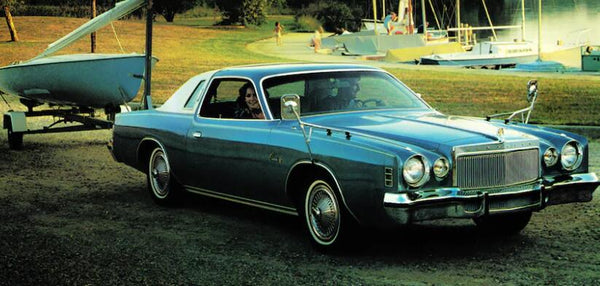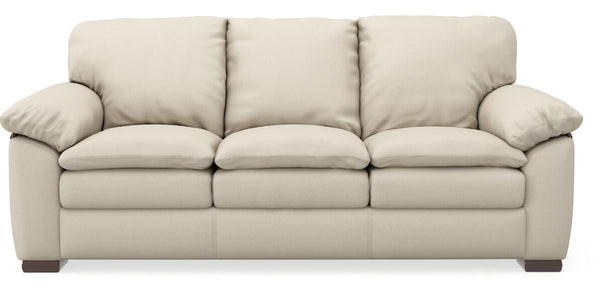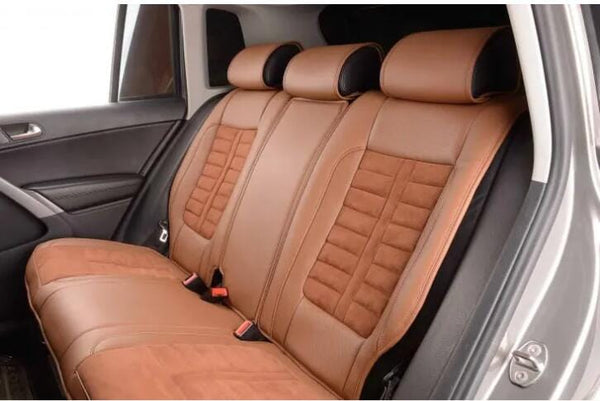Ihr Warenkorb ist derzeit leer
The Allure and Legacy of Corinthian Leather
When it comes to luxury and sophistication in the realm of automotive design, one term that often surfaces is "Corinthian leather." Synonymous with elegance and opulence, Corinthian leather has captivated car enthusiasts and aficionados for decades. The term conjures images of sumptuous interiors, rich textures, and a touch of timeless class. But what exactly is Corinthian leather, and how did it become such a sought-after feature in the automotive world?
Origins of Corinthian Leather
Contrary to popular belief, "Corinthian leather" isn't a term rooted in ancient history or even a specific type of leather. Instead, it was a marketing creation that gained immense popularity in the 1970s. The term was coined by the Chrysler Corporation as part of a campaign to promote its luxury car line, particularly the Chrysler Cordoba model. The ads featured acclaimed actor Ricardo Montalbán, who often described the car's interior as being upholstered in "soft Corinthian leather."
Buy leather gifts for her

The Mysterious Allure
The use of the term "Corinthian" immediately conjures associations with ancient Greece and its rich history of architecture, art, and culture. This connection to an illustrious past lent an air of authenticity and prestige to the leather, even though there is no actual historical basis for the term. This intriguing blend of history, mythology, and luxury marketing contributed to the enduring allure of Corinthian leather.
Craftsmanship and Quality
Although the term itself was a marketing fabrication, luxury car manufacturers did invest in producing high-quality leather interiors to match the image created by the term. Corinthian leather interiors were often meticulously crafted, with an emphasis on comfort, durability, and aesthetic appeal. The leather used for these interiors was usually of premium quality, with careful attention paid to details such as stitching, finishing, and color selection.
Cultural Impact
The popularity of Corinthian leather extended beyond the automotive industry. The term became a cultural touchstone, referenced in movies, television shows, and even parodies. It entered the lexicon as a symbol of luxury, making it a status symbol. This cultural impact further cemented Corinthian leather's place in the collective consciousness.
Evolution and Criticisms
As the years passed, the term "Corinthian leather" began to face criticisms for its vague and misleading nature. Consumers became more educated about leather types and grades, leading to demands for transparency and accuracy in advertising. Manufacturers eventually started using more specific terms, such as "premium leather" or "full-grain leather," to describe their interiors.
Legacy and Nostalgia
Despite its decline in use due to changing consumer preferences and advertising practices, the legacy of Corinthian leather lives on. It serves as a reminder of a bygone era of automotive advertising when concepts of luxury were intertwined with creative storytelling. The term evokes a sense of nostalgia for a time when car advertisements were about more than just specifications – they were about crafting a dream and selling an experience.
In the world of luxury and automotive history, the term "Corinthian leather" stands as a testament to the power of marketing and the art of creating a compelling narrative. While it may not have a factual basis, its impact on the industry and popular culture is undeniable. Whether regarded as a clever marketing ploy or a symbol of a particular era, Corinthian leather remains an intriguing and enduring part of the automotive landscape.

Benefits of Corinthian Leather
"Corinthian leather" is a term that gained popularity in the 1970s as a marketing description for certain luxury car interiors. However, it's important to note that the term itself is not a technical or industry-specific designation for a type of leather. It was coined to evoke a sense of opulence and sophistication, but it doesn't refer to a specific leather type or manufacturing process. As such, there are no inherent benefits directly tied to "Corinthian leather." Instead, the benefits associated with the term typically relate to the quality and features of the leather used in luxury car interiors.
Here are some potential benefits often attributed to high-quality leather, which may be associated with what was colloquially referred to as "Corinthian leather":
- Luxurious Feel: High-quality leather can provide a luxurious and comfortable tactile experience. Soft, supple leather with a smooth texture can enhance the overall comfort and enjoyment of driving or riding in a luxury vehicle.
- Durability: Premium leather is often more durable and can withstand the rigors of daily use better than lower-grade materials. Properly maintained leather can age gracefully, developing a unique patina that adds character to the interior.
- Aesthetic Appeal: Leather interiors can lend an air of sophistication and elegance to a vehicle's interior design. Rich colors, fine stitching, and attention to detail can enhance the visual appeal of the cabin.
- Temperature Regulation: Leather has natural insulating properties, helping to keep the interior cooler in hot weather and warmer in cold weather, compared to other materials like vinyl or cloth.
- Easy to Clean: Quality leather is easier to clean and maintain than some other upholstery materials. Spills and stains can often be wiped away without leaving lasting marks.
- Longevity: With proper care, high-quality leather can have a longer lifespan compared to other materials. This can contribute to the overall value and resale potential of the vehicle.
- Prestige: Leather has historically been associated with luxury and prestige. The use of leather in a vehicle's interior can elevate the perception of the vehicle's overall quality and status.
It's important to note that not all leather is created equal. There are various grades and types of leather, each with its own set of characteristics and benefits. Full-grain leather, for example, is considered one of the highest-quality types of leather due to its natural grain pattern and durability. Other factors, such as the tanning process, finishing techniques, and craftsmanship, also contribute to the overall quality of the leather used in luxury car interiors.
In modern times, the term "Corinthian leather" has lost its significance due to changing consumer preferences and increased awareness about leather quality and terminology. Instead, car manufacturers tend to use more specific terms to describe the type of leather used in their interiors, such as "full-grain leather," "top-grain leather," or "premium leather," to provide customers with more accurate information about the materials they're getting in their vehicles.

How to Properly Care for Corinthian Leather
Proper care for any type of leather, including what may have been referred to as "Corinthian leather," is essential to maintain its appearance, comfort, and longevity. While the term "Corinthian leather" itself is more of a marketing concept, caring for high-quality leather in your luxury vehicle's interior follows similar principles. Here's a guide on how to properly care for leather upholstery:
- Regular Cleaning:
Regular cleaning is crucial to prevent dirt, dust, and oils from building up and damaging the leather over time. Use a soft, damp microfiber cloth to gently wipe down the leather surfaces. Avoid using excessive water, as leather doesn't react well to moisture. If there are spills, blot them immediately with a clean, absorbent cloth.
- Avoid Harsh Chemicals:
Avoid using harsh cleaning products, detergents, or solvents on leather surfaces. These can strip the natural oils and damage the leather. Stick to specially formulated leather cleaners that are pH-balanced and designed for automotive use.
- Conditioning:
Leather can dry out and lose its natural oils over time, leading to cracking and stiffness. To prevent this, use a high-quality leather conditioner to restore moisture and keep the leather supple. Apply the conditioner according to the product instructions and use a clean, soft cloth to gently massage it into the leather.
- Sun Protection:
Direct sunlight and heat can cause the leather to fade, dry out, and crack. Whenever possible, park your vehicle in shaded areas or use sunshades to protect the interior from UV rays. Consider using UV-blocking window tints as well.
- Gentle Brushing:
For areas with stitching, creases, or perforations, use a soft bristle brush to gently remove dust and debris. Be careful not to apply excessive pressure that could damage the leather or stitching.
- Avoid Sharp Objects:
Prevent scratches and tears by being cautious with sharp objects like keys, belt buckles, and jewelry when getting in and out of the vehicle.
- Spills and Stains:
Address spills and stains as quickly as possible to prevent them from setting into the leather. Use a clean cloth to wash up excess liquid, then use a damp cloth with a mild leather cleaner to gently clean the area. Always test any cleaning product in an inconspicuous spot before applying it to a visible area.
- Professional Cleaning:
For deep cleaning or stubborn stains, consider seeking professional leather cleaning services. Professionals have the expertise and equipment to safely clean and condition your leather without causing damage.
- Routine Maintenance:
Create a regular maintenance schedule for cleaning and conditioning your leather upholstery. The frequency of care depends on factors such as climate, usage, and exposure to elements.
- Avoid Moisture and Humidity:
Moisture and humidity can cause mold and mildew growth on leather. If your vehicle is stored in a humid environment, consider using a dehumidifier to maintain a suitable environment for the leather.
Remember that the care routine may vary depending on the specific type of leather used in your vehicle's interior. Always refer to the manufacturer's recommendations and guidelines for the best care practices. Proper care not only preserves the aesthetic appeal of your vehicle's interior but also ensures that the leather remains comfortable and durable for years to come.
How is Corinthian Leather Fifferent From Other Leathers
It's important to clarify that "Corinthian Leather" is not an actual type of leather but rather a marketing term used to create a sense of luxury and exclusivity. The term was coined to evoke an aura of opulence and sophistication, but it does not refer to a distinct or specific category of leather. In contrast, there are several types of genuine leather used in various industries, including fashion, furniture, and automotive upholstery. These types of leather have distinct characteristics based on their source, tanning process, and treatment. Here are a few common types of genuine leather:
-
Full-Grain Leather: This is the top layer of the hide, which retains its natural texture and grain. Full-grain leather is highly durable and develops a unique patina over time. It's often used in high-quality products due to its strength and natural appearance.
-
Top-Grain Leather: Similar to full-grain leather, top-grain leather is also derived from the top layer of the hide. However, it undergoes a process where the outer layer is sanded down to remove imperfections, resulting in a smoother surface. It's then often treated with a finish to provide certain characteristics, such as uniform color.
- Corrected-Grain Leather: This type of leather is sanded to remove blemishes, imperfections, and natural grain. An artificial grain pattern is then embossed onto the surface. Corrected-grain leather is often used for items where a consistent appearance is desired.
-
Aniline Leather: Aniline leather is treated with aniline dyes, which penetrate the leather to bring out its natural color and texture. This type of leather retains the original grain but may be more susceptible to stains and fading due to its minimal protective coating.
- Semi-Aniline Leather: This type of leather is like aniline leather but has a thin protective coating applied to enhance durability and provide some stain resistance.
- Nubuck Leather: Nubuck is like suede but is made from the top grain of the leather and is buffed to create a velvety texture. It's soft and luxurious but requires careful maintenance.
In summary, "Corinthian Leather" is a term without a defined technical meaning in the world of leather production. It was used as a marketing ploy by Chrysler to enhance the perceived luxury of their vehicles' interiors. On the other hand, various types of genuine leather have distinct characteristics based on their source, processing, and treatment. When choosing leather products, it's important to understand the specific type of leather being used and its attributes to make an informed decision.
A Journey Through Time: The Emergence of Corinthian Leather
When it comes to luxury and sophistication in the automotive industry, few terms evoke as much intrigue and curiosity as "Corinthian leather." This phrase has become synonymous with opulence, often associated with premium car interiors that offer unparalleled comfort and elegance. But what exactly is Corinthian leather, and where did it come from? To unravel the mysteries surrounding this term, let's embark on a journey to understand its origin and significance.
The Birth of a Catchphrase
The story of Corinthian leather begins with an advertising campaign for the Chrysler Cordoba, a personal luxury car introduced by the American automaker Chrysler in the 1970s. The Cordoba was designed to compete with other luxury cars of the era, and Chrysler needed a way to differentiate its product in the market.
In 1975, Chrysler hired Ricardo Montalbán, a well-known actor with a sophisticated and distinguished image, to promote the Cordoba. Montalbán, in his charming demeanor, delivered a series of memorable television commercials where he extolled the virtues of the car's interior, particularly the upholstery. It was during these commercials that he first used the term "Corinthian leather" to describe the luxurious material used in the car's seats.
Unraveling the Misconception
Despite the alluring name, it's important to clarify that "Corinthian leather" is not an actual type of leather originating from the ancient city of Corinth, as the name might suggest. The term was purely a marketing creation, conjured up to evoke an air of sophistication and timeless luxury. The leather used in Cordoba's interior was not significantly different from other high-quality leathers used in luxury cars of that era.
The actual source of the leather used in the Cordoba's seats is somewhat elusive. Some reports suggest that the leather was imported from various places, including Italy and Uruguay, known for their premium leather products. However, the exact details remain shrouded in a mix of marketing mystique and commercial confidentiality.
The Legacy of Corinthian Leather
While "Corinthian leather" may not represent a unique type of leather, its legacy endures in popular culture. The term has been parodied and referenced in numerous movies, TV shows, and commercials, cementing its place as a symbol of extravagant luxury, albeit with a touch of irony.
The success of the Cordoba advertising campaign demonstrates the power of branding and storytelling in influencing consumer perceptions. Chrysler's skillful use of language and imagery not only helped differentiate the Cordoba in a competitive market but also created a lasting association between luxury and the Corinthian leather catchphrase.
Conclusion
In the world of automotive marketing, "Corinthian leather" stands as a prime example of how a carefully crafted term can transform a product's image. While the leather itself may not have been extraordinary, the concept of luxury it conveyed captured the imagination of consumers and left an indelible mark on pop culture. The story of Corinthian leather reminds us of the art of storytelling and the enduring impact of advertising in shaping our perceptions of products and experiences.
Shop our collection of:
Vintage Leather Backpacks | Dark Brown Leather Backpacks | Black Leather Backpacks | Vintage Duffle Bags | Vintage Leather Briefcases | Vintage Bags | Vintage Leather Journals
Related Posts:




